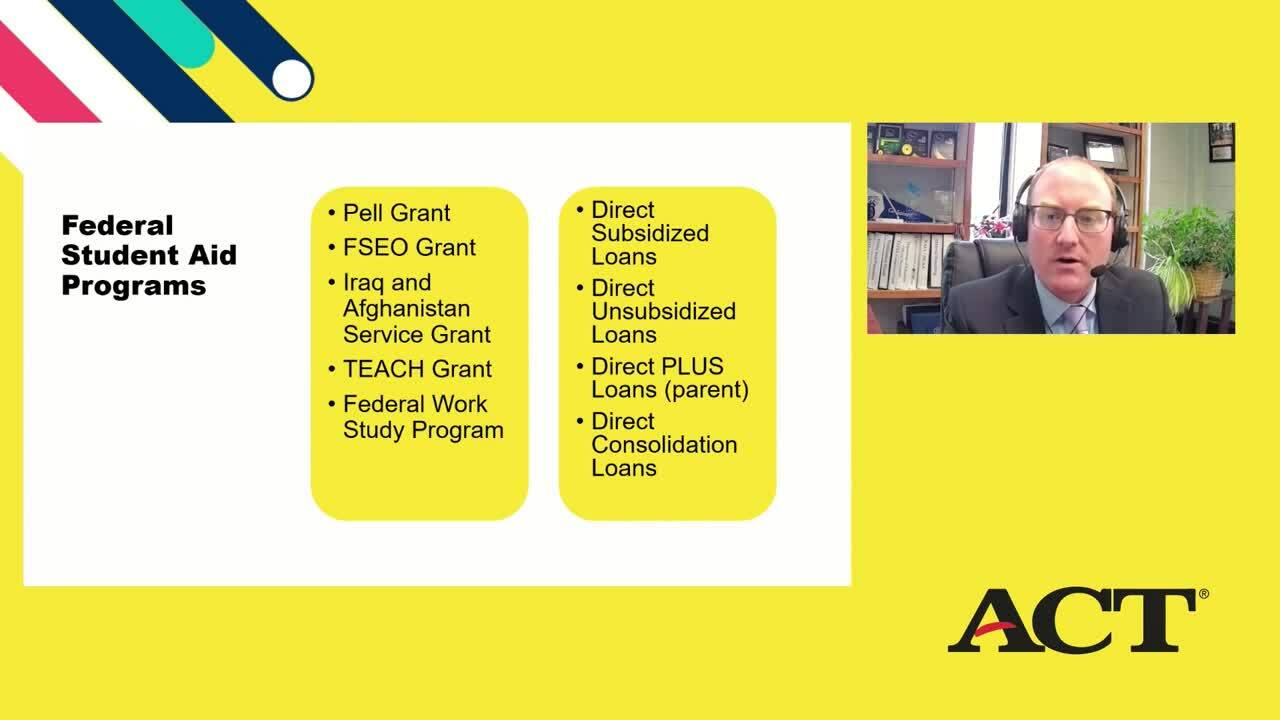Financial Aid Checklist
Start saving.
You don’t need a full-time salary to start managing your money responsibly. Every penny counts, so keep track of your spending habits and identify areas where you can cut back and save.
Educate yourself on the financial aid process.
Understanding the ins and outs of financial aid can be a daunting and confusing task, but if you’re reading this… you’re already off to a good start. Talk to friends or family members who have already gone through the college application process and read articles online. Use the Federal Student Aid Office’s financial aid glossary to define terms and phrases that might trip you up during your research and download the free eBook Financial Aid: Paying for College to use as a guide throughout the application process.
Talk to your family about funding your future.
Have honest conversations with your parents or guardians about money and how you plan to pay for your education. It’s important to know your budget before you choose a school so you can figure out the amount of money you need to secure through financial aid, scholarships, and personal savings. Use the Federal Student Aid Estimator to get an early estimate of your eligibility for federal student aid. Want to look at your college options side by side? Download the cost comparison worksheet.

Navigating the Financial Aid Process
Understand college costs.
Learn about the typical college costs, like tuition, room and board, books, etc. Spend some time researching the costs associated with the colleges you’re interested in attending. Tools like the US Department of Education’s College Scorecard can give you a quick snapshot of colleges and universities based on program, location, size, and school. Remember, these estimated costs can vary due to a number of factors. Make sure you visit a college’s website to confirm tuition and fees.
Meet with your school counselor.
Your school counselor has a lot of great resources for financial aid. Make an effort to set up a meeting or send an email to ask about local scholarships and grants that you’re eligible to receive.
Fill out additional scholarship applications.
Don’t forget to fill out scholarship applications not covered by the FAFSA form. Here are some resources to help start your search:
- Search for state financial aid programs using the National Association of Student Financial Aid Administrators state map.
- Ask employers, clubs, associations, and other local groups if they offer scholarships.
- Talk to the financial aid office at the college you plan to attend.
- Talk to your high school counselor and find out if they know of any grants or scholarships.
- Use the Internet to search for scholarships, using trusted resources, like the US Department of Labor’s free scholarship search tool and Scholarships.com
- Opt in to the ACT Recruit Me (formerly EOS)
Collect necessary documentation.
Before you start the financial aid application process, make sure you have everything you need to fill out the forms correctly, including your Social Security Number, driver’s license number, and W-2 forms. Get the full list here.
Create your FSA ID.
Your FSA ID is a username and password you create that allows you to log-in to Federal Student Aid’s online systems and serves as your legal signature. You must have your FSA ID in order to fill out the FAFSA form. Create your FSA ID.
Complete the FAFSA form.
High school seniors should submit the Free Application for Federal Student Aid (FAFSA) as soon as possible after it opens on December 1. The FAFSA provides you with access to state and federal aid as well as financial assistance from many colleges. Forms are available at the FAFSA website, FAFSA mobile app, high school counselor offices, or by calling the Federal Student Aid information hotline (800.433.3243). REMEMBER: You must complete the FAFSA every year you are enrolled in college.
Review your financial aid package.
After you’ve submitted your ACT® test scores and completed your FAFSA, the financial aid office at each of the colleges you have been accepted to will send you an award letter outlining the financial assistance they can provide you. This may include grants, scholarships, loans, and/or work study programs. Remember, you do not have to accept all of the items included in a financial aid package. Learn the five major things to look for in your award.
Learn More About Paying for College
ACT provides comprehensive college planning resources to help you make informed decisions about your educational and professional path. Explore our paying for college resources to gain valuable insights on financial aid, scholarship tips and much more!